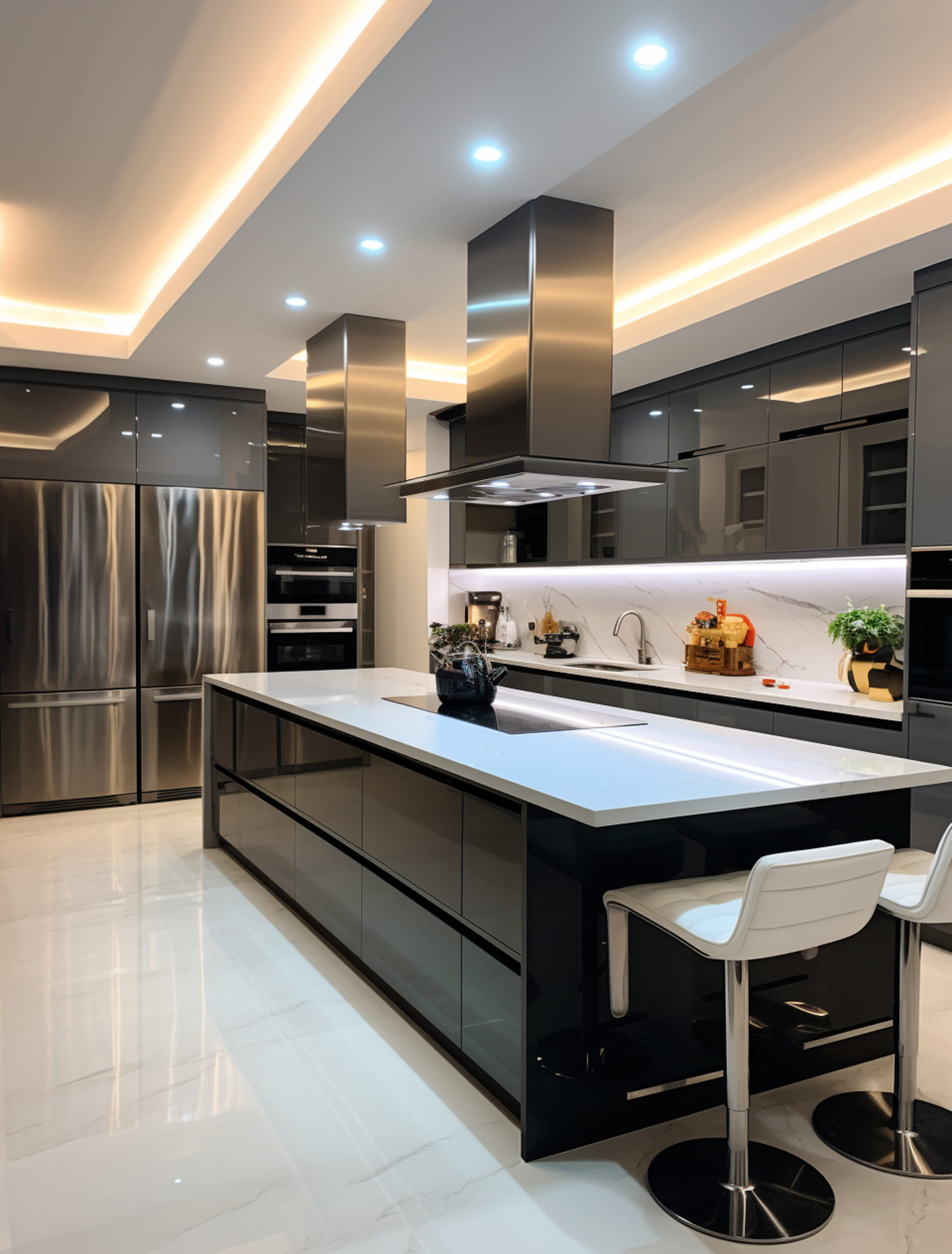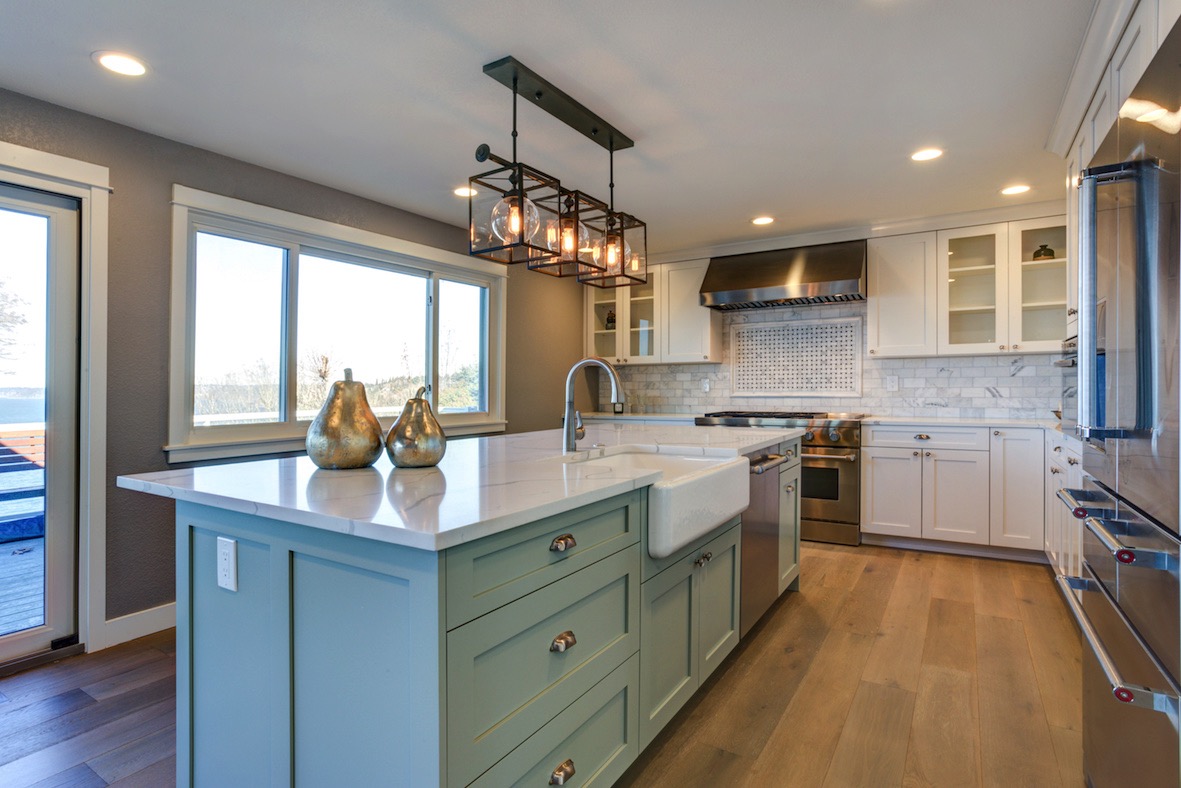Why Kitchen Countertops Matter
Your kitchen countertop isn’t just a surface; it’s the heart of your home’s most functional space. It’s where you prep meals, gather with friends, and maybe even sneak in a quick work-from-home session. A well-chosen countertop elevates your kitchen’s style while standing up to spills, scratches, and the occasional hot pan. In 2025, homeowners are prioritizing durability, low maintenance, and timeless aesthetics, with a nod to eco-friendly options. Let’s dive into the top five materials dominating kitchen design this year, based on their performance, popularity, and visual appeal.
Quartz: The Low-Maintenance Superstar

Quartz countertops have been a fan favorite for years, and in 2025, they’re still reigning supreme. Engineered from crushed quartz crystals mixed with resin, quartz offers a sleek, modern look with unmatched durability. It’s the go-to choice for busy households where practicality meets style.
Why Choose Quartz?
Quartz is non-porous, meaning it resists stains, bacteria, and mold without needing regular sealing. I once helped a friend renovate her kitchen, and she chose quartz because her kids were notorious for spilling juice and leaving pizza sauce smears. Two years later, her countertops still look brand-new with minimal effort. Available in a rainbow of colors and patterns—from marble-like veining to bold solids—quartz fits any design aesthetic, from minimalist to maximalist.
Pros and Cons of Quartz
Pros: Highly durable, stain-resistant, low maintenance, wide range of designs.
Cons: Not as heat-resistant as natural stone, seams may be visible in large installations, higher cost than budget options.
Where to Get Quartz Countertops
Major retailers like The Home Depot and specialty suppliers like Caesarstone offer extensive quartz collections. For the best deals, check local fabricators who often provide custom cuts and competitive pricing. Online platforms like CountertopSmart can connect you with suppliers for both standard and bespoke designs.
Granite: The Timeless Classic

Granite has long been synonymous with luxury, and in 2025, it remains a top contender for its natural beauty and durability. Each slab is unique, offering one-of-a-kind patterns that add character to any kitchen.
The Enduring Appeal of Granite
Granite’s natural veining and speckled patterns make it a standout for homeowners seeking a high-end, organic look. I remember visiting a client’s home where their granite countertop—featuring dramatic black and gold swirls—became the focal point of the entire kitchen. It’s heat-resistant and scratch-resistant, but it does require periodic sealing to prevent stains. If you’re someone who loves cooking with bold ingredients like red wine or turmeric, prompt cleanup is key.
Pros and Cons of Granite
Pros: Unique patterns, heat-resistant, durable, adds resale value.
Cons: Requires sealing every 1–3 years, can stain if not maintained, higher cost for premium slabs.
Cost and Installation Tips
Granite costs between $40 and $100 per square foot, with labor adding $35–$85 per hour. For budget-conscious renovators, granite tiles ($5–$15 per square foot) can be a cost-effective alternative. Hire a professional for installation to ensure precise cuts and seams, especially for L-shaped or island countertops.
Marble: The Luxurious Showstopper

Marble countertops are the epitome of elegance, favored by designers for their stunning veining and soft, luminous finish. In 2025, marble is making waves in high-end kitchens, despite its higher maintenance needs.
Is Marble Worth the Hype?
Marble’s intricate veining and color variations—from creamy whites to dramatic blacks—make it a designer’s dream. I once worked with a couple who insisted on marble for their kitchen island, and the result was breathtaking, like a piece of art you could chop onions on. However, marble is prone to etching and staining, especially from acidic substances like lemon juice or vinegar. If you’re willing to embrace its patina or invest in regular care, marble’s beauty is unmatched.
Pros and Cons of Marble
Pros: Timeless elegance, unique veining, heat-resistant, adds luxury.
Cons: Prone to scratches, stains, and etching, requires regular sealing, expensive ($100–$300 per square foot).
Maintenance Tips for Marble
To keep marble pristine, seal it annually and clean spills immediately with a mild detergent. Avoid harsh cleaners like bleach, which can damage the surface. For a professional touch, consult with stone specialists like Aria Stone Gallery for sealing products and maintenance advice.
Quartzite: The Durable Natural Beauty

Quartzite, often confused with quartz, is a natural stone formed from compressed sandstone. In 2025, it’s gaining traction for offering marble’s aesthetic with granite’s durability.
Quartzite’s Unique Charm
Quartzite combines the best of both worlds: the veined, elegant look of marble and the toughness of granite. I saw a quartzite countertop in a friend’s modern farmhouse kitchen, and its soft gray veining paired beautifully with rustic wood cabinets. It’s highly heat-resistant and ideal for heavy-duty kitchens, but it can be porous, requiring sealing to prevent stains from acidic spills like wine or tomatoes.
Pros and Cons of Quartzite
Pros: Natural beauty, durable, heat-resistant, marble-like aesthetic.
Cons: Requires sealing, prone to staining if unsealed, higher cost than granite.
Where to Source Quartzite
Quartzite is available through natural stone suppliers like Use Natural Stone or local fabricators. For unique slabs, check high-end retailers or stone yards, where you can hand-pick your slab for a custom look. Expect to pay $80–$150 per square foot, depending on quality and rarity.
Butcher Block: The Warm, Eco-Friendly Choice
Butcher block countertops, made from hardwood like walnut or maple, are surging in popularity in 2025 for their warm, natural appeal and eco-friendly credentials. They’re perfect for homeowners seeking a cozy, sustainable vibe.
Why Butcher Block Stands Out
Butcher block brings a tactile, organic warmth to kitchens that stone can’t match. I installed a walnut butcher block in my own kitchen, and it’s become the heart of every family gathering—scratches and all, it tells a story. It’s budget-friendly and sustainable, especially when sourced from reclaimed or responsibly harvested wood. However, it requires regular sealing to protect against moisture and heat damage.
Pros and Cons of Butcher Block
Pros: Affordable, eco-friendly, warm aesthetic, easy to repair.
Cons: Sensitive to moisture and heat, requires regular maintenance, prone to scratches.
Best Tools for Maintaining Butcher Block
Use food-safe mineral oil for monthly sealing and a butcher block conditioner for added protection. Brands like Howard Products offer excellent maintenance kits, available at retailers like Amazon or The Home Depot. Sanding minor scratches and re-oiling can keep your countertop looking fresh.
Comparison of Top 5 Kitchen Countertop Materials
To help you choose, here’s a side-by-side comparison of the top five countertop materials for 2025, based on key factors like durability, maintenance, cost, and aesthetic appeal.
Material
Durability
Maintenance
Cost (per sq. ft.)
Aesthetic
Best For
Quartz
High
Low
$50–$120
Modern, versatile
Busy households, low maintenance
Granite
High
Moderate
$40–$100
Natural, luxurious
Traditional, high-end kitchens
Marble
Moderate
High
$100–$300
Elegant, artistic
Luxury, designer kitchens
Quartzite
High
Moderate
$80–$150
Natural, marble-like
Durable, stylish kitchens
This table highlights the trade-offs between cost, maintenance, and style, helping you align your choice with your lifestyle and budget.




